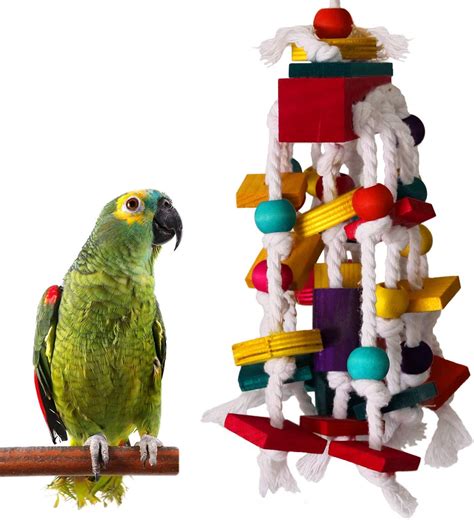Introduction:
Birds are beloved companions that bring joy and entertainment to our lives. Providing them with appropriate toys is essential for their physical and mental well-being. However, choosing the right toy for each species can be a daunting task. This comprehensive guide explores the unique toy needs of various bird species, empowering you to make informed decisions that enhance your feathered friends’ lives.

Bird Toy Considerations:
1. Age and Developmental Stage:
The age and developmental stage of your bird significantly influence the types of toys it finds engaging. Young birds require toys that stimulate their senses and encourage exploration, while older birds may prefer toys that challenge their cognitive abilities or provide comfort.
2. Size and Physiology:
The size of your bird determines the appropriate toy dimensions. Larger birds, such as parrots, require toys that can withstand their powerful beaks and active playstyles. Smaller birds, like finches, need toys that are small enough to manipulate easily.
3. Beak and Claw Strength:
Birds use their beaks and claws to interact with their surroundings. Toys should be made from materials that can withstand their pecking and clawing without splintering or breaking. Toys that are too hard or sharp can injure your bird.
4. Behavioral Needs:
Consider your bird’s species-specific behaviors when selecting toys. For example, parakeets enjoy chewing on paper and foraging for food, while parrots excel at solving puzzles and manipulating objects. Tailoring toys to their natural instincts promotes engagement and mental stimulation.
Bird Toy Recommendations for Specific Species:
1. Parakeets and Budgies:
- Bells and jingles
- Mirrors for social interaction
- Shredding toys made of paper or cardboard
- Foraging toys with hidden seeds or treats
2. Canaries:
- Perches with different textures and shapes
- Musical toys with gentle melodies
- Bathing and misting toys for hydration
- Puzzle feeders to encourage mental stimulation
3. Lovebirds:
- Mirrors for bonding and socialization
- Rope ladders for exploration and climbing
- Toys with bells and bright colors
- Nesting boxes for comfort and security
4. Cockatiels:
- Climbing toys with ropes, ladders, and perches
- Puzzle toys that hide treats or require problem-solving
- Shredding toys for beak exercise
- Mirrors for entertainment and interaction
5. Parrots (e.g., Amazon, African Grey):
- Large foraging toys with hidden compartments
- Puzzle toys that challenge their cognitive abilities
- Toys that encourage beak manipulation and vocalizations
- Interactive toys that promote bonding and entertainment
Tips for Choosing Bird Toys:
- Observe your bird: Pay attention to its play behaviors and preferences to identify suitable toys.
- Rotate toys regularly: This prevents boredom and keeps your bird engaged.
- Inspect toys frequently: Ensure toys are safe and free from damage that could injure your bird.
- Consider your bird’s personality: Some birds prefer solitary play, while others enjoy interactive toys.
- Provide a variety: Offer a range of toys to meet different needs and stimulate your bird’s senses.
Current Status and Future Outlook:
The global bird toy market is projected to reach $2.2 billion by 2025, driven by the growing popularity of pet birds and the increasing emphasis on animal welfare. Emerging trends include:
- Smart toys with interactive features and connectivity
- Eco-friendly toys made from sustainable materials
- Toys that promote bird health and wellness
Conclusion:
Selecting the right bird toy for your specific species is crucial for enhancing its quality of life. By understanding your bird’s unique needs and preferences, you can provide toys that promote engagement, mental stimulation, and overall well-being. As the bird toy industry continues to evolve, we can expect innovative and technologically advanced toys that meet the evolving needs of our feathered companions.





















